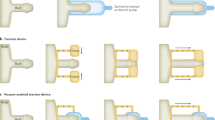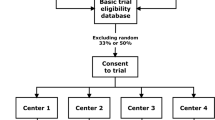Abstract
Sexual dysfunction is a frequent result of traumatic and non traumatic neurological disorders, including spinal cord injury, stroke, traumatic brain injury and autonomic neuropathy (for example, as may be seen in patients with diabetes mellitus). Although many methods have been suggested for the treatment of some of these problems in male patients, most are invasive and have a substantial morbidity. This is the report of a pilot trial of vacuum tumescence constriction therapy for 30 patients with chronic neurological impotence. Seventeen of these patients, following sexual counselling and training, decided to purchase such a device. At follow up, a mean of 21 months, over 50% of those who had purchased the device were still actively using it. The frequency of coitus increased from 0.3/wk to 1.5/wk (t = -5.7; p < 0.0001). No significant morbidity was reported by patients. Vacuum tumescence constriction therapy shows promise as a noninvasive method for the treatment of neurological impotence.
Similar content being viewed by others
Log in or create a free account to read this content
Gain free access to this article, as well as selected content from this journal and more on nature.com
or
References
Cole T M (1975) Sexuality and physical disabilities. Arch Sex Behav: 4: 389–403.
Hanson R W, Franklin M R (1976) Sexual loss in relation to other functional losses for spinal cord injured males. Arch Phys Med Rehabil 57: 291–293.
Van Arsdalen K N, Klein F A, Hackler R H, Brady S M (1981) Penile implants in spinal cord injury patients for maintaining external appliances. J Urol 126: 331–332.
Iwatsubo E, Tanaka M, Takahashi K, Akatsu T (1986) Non-inflatable penile prosthesis for the management of urinary incontinence and sexual disability of patients with spinal cord injury. Paraplegia 24: 307–310.
Scott F B, Bradley W E, Timm G W (1973) Management of erectile impotence: use of implantable inflatable prosthesis. Urology 2: 80–82.
Small M P (1978) Small-Carrion penile prostheses: a report on 160 cases and review of the literature. J Urol 119: 365–368.
Sidi A A, Cameron J S, Dykstra D D, Reinberg Y, Lange P H (1987) Vasoactive intracavernous pharmacotherapy for the treatment of erectile impotence in men with spinal cord injury. J Urol 138: 539–542.
Lloyd L K, Richards J S (1989) Intracavernous pharmacotherapy for management of erectile dysfunction in spinal cord injury. Pareplegia 27: 457–464.
Wyndaele J J, de Meyer J M, de Sy W A, Claessens H (1986) Intracavernous injection of vasoactive drugs, an alternative for treating impotence in spinal cord injury patients. Pareplegia 24: 271–275.
Kabalin J N, Kessler R (1988) Infectious complications of penile prosthesis surgery. J Urol 139: 953–955.
Zasler N D, Katz P G (1989) Synergist erection system in the management of impotence secondary to spinal cord injury. Arch Phys Med Rehabil 70: 712–716.
Lloyd E E, Toth L L, Perkash I (1989) Vacuum tumescence: an option for spinal cord injured males with erectile dysfunction. SCI Nursing 7: 25–28.
Chancellor M B, Hills E, Schwarts M, Hirsch I H (1991) Treatment of erectile dysfunction in males with spinal cord injury using the vacuum constriction devide (VCD). J Am Paraplegia Soc 14: 73.
Nadig P W, Ware J C, Blumoff R (1986) Noninvasive device to produce and maintain an erection-like state. Urology 27: 126–131.
Author information
Authors and Affiliations
Rights and permissions
About this article
Cite this article
Heller, L., Keren , O., Aloni, R. et al. An open trial of vacuum penile tumescence: constriction therapy for neurological impotence. Spinal Cord 30, 550–553 (1992). https://doi.org/10.1038/sc.1992.113
Issue date:
DOI: https://doi.org/10.1038/sc.1992.113
Keywords
This article is cited by
-
Autonomic nervous system disorders in multiple sclerosis
Journal of Neurology (2023)
-
Fonction sexuelle et bilan sexologique de i’homme paraplégique et tétraplégique
Andrologie (1994)



